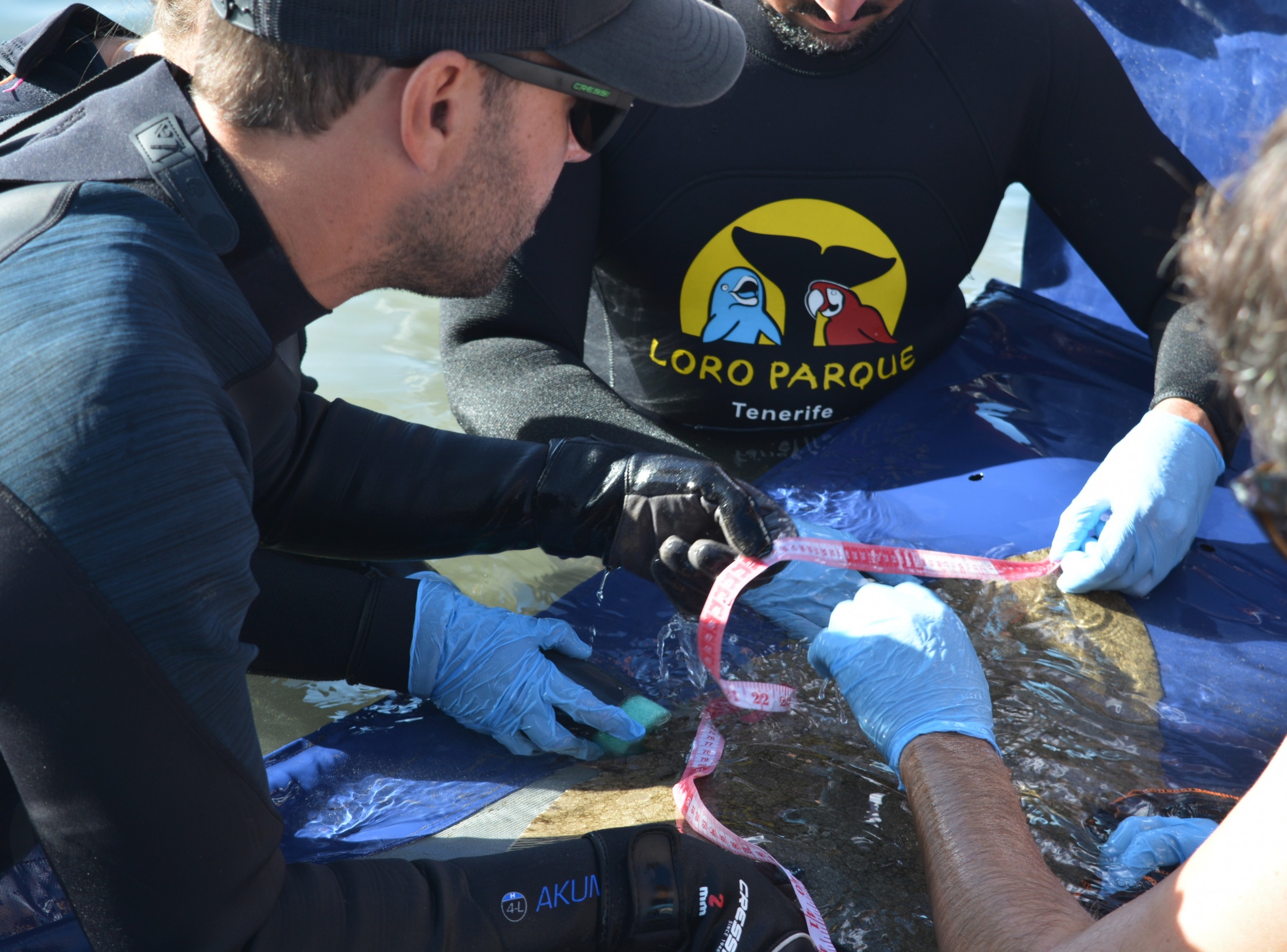FOR THE FOURTH CONSECUTIVE YEAR, SCIENTISTS FROM THE LORO PARQUE FOUNDATION, ULPGC AND RAYS OF PARADISE, PLACE ACOUSTIC TRANSMITTERS ON SPINY BUTTERFLY RAYS, ONE OF THE MOST ENDANGERED MARINE SPECIES IN THE CANARY ISLANDS
Santa Cruz de Tenerife, September 22, 2023. A total of 18 rays were tagged this week with an acoustic transmitter on the beaches of Tenerife and Gran Canaria with the aim of monitoring these animals and estimating the critical areas for this critically endangered species according to the red list of the International Union for Conservation of Nature (UICN). This action is part of the CanBIO project (funded by Loro Parque and the Government of the Canary Islands) and promoted by the Spanish Foundation for Science and Technology (FECYT). It was developed by researchers from the University Institute of Aquaculture and Marine Ecosystems (ECOAQUA) of the University of Las Palmas de Gran Canaria, Foundation Loro Parque and the Poema del Mar aquarium.
The use of acoustic tags allows the individual identification of Spiny Butterfly Ray (Gymnura altavela) specimens, since the transmitters are detected by fixed stations and also by reception systems installed in conventional or autonomous vessels. The importance of this initiative, as stated by David Jiménez, leader of the Rays Of Paradise project, is “to know how they use the habitat and to learn more about the biology and ecology of this species, as this will allow us to establish appropriate management tools to protect them adequately”.
With the objective of ensuring the welfare of the tagged individuals, the process involved a multidisciplinary team made up of veterinarians from differents entities, whose purpose is to expand the existent knowledge about the Gymnura altavela in the Canary Islands. Parallel to this, a public awareness activity was carried out to raise awareness about the effects of climate change on marine biodiversity.
Since last year, ultrasound scans and blood samples have been taken from the researched Spiny Butterfly Rays. This intervention “allows us to know the state of gestation”, affirms Ángel Curros, veterinarian at Poema del Mar, who emphasizes that “it is relevant as this way we understand why they are on the beach and what for”, a knowledge of the reproductive biology totally unknown for this species. The expert also explains that “they, probably, are quietly gestating their young after a period of reproduction”. Aspects such as echolocation are one of the many still unknown”. he points out.
This activity is part of BioMAR, a line of action within the CanBIO Project that is dedicated, among other aspects, to the improvement of information on the populations of certain critically endangered marine species. The director of Loro Parque Foundation, Javier Almunia, highlights that” it has become evident that the Spiny Butterfly Rays remain on one island and, for the moment, no exemplar has been found on two different islands”. Almunia concludes that, given this behavior, “if these preliminary data are confirmed, it is most likely that conservation measures to be taken in the future will have to be planned from the point of view of island populations”. This latest tagging makes a total of 118 manta rays identified since the beginning of the project and thanks to which, valuable information will be provided for their future protection.
ABOUT CANBIO
CanBIO is an environmental research program funded in equal parts by the Government of the Canary Islands and Loro Parque with two and a half million euros that have been invested, including this fifth year, to study climate change in the sea, oceanic acidification and its effects on marine and terrestrial biodiversity in the Canary Islands. Also, participating in the project are different research groups from the University of La Laguna and the University of Las Palmas de Gran Canaria, in addition to other environmental volunteer groups.
The activity was initiated in 2019 and the ultimate goal is to establish a monitoring network of parameters linked to climate change, oceanic acidification, underwater noise pollution and the relationships of all of them with marine and terrestrial biodiversity in the Canary Islands. The objective of CanBIO is to become a source of data for climate change models for the Macaronesian region, as well as a model for the protection of marine and terrestrial species in the entire region, in view of the imminent global change we are facing


